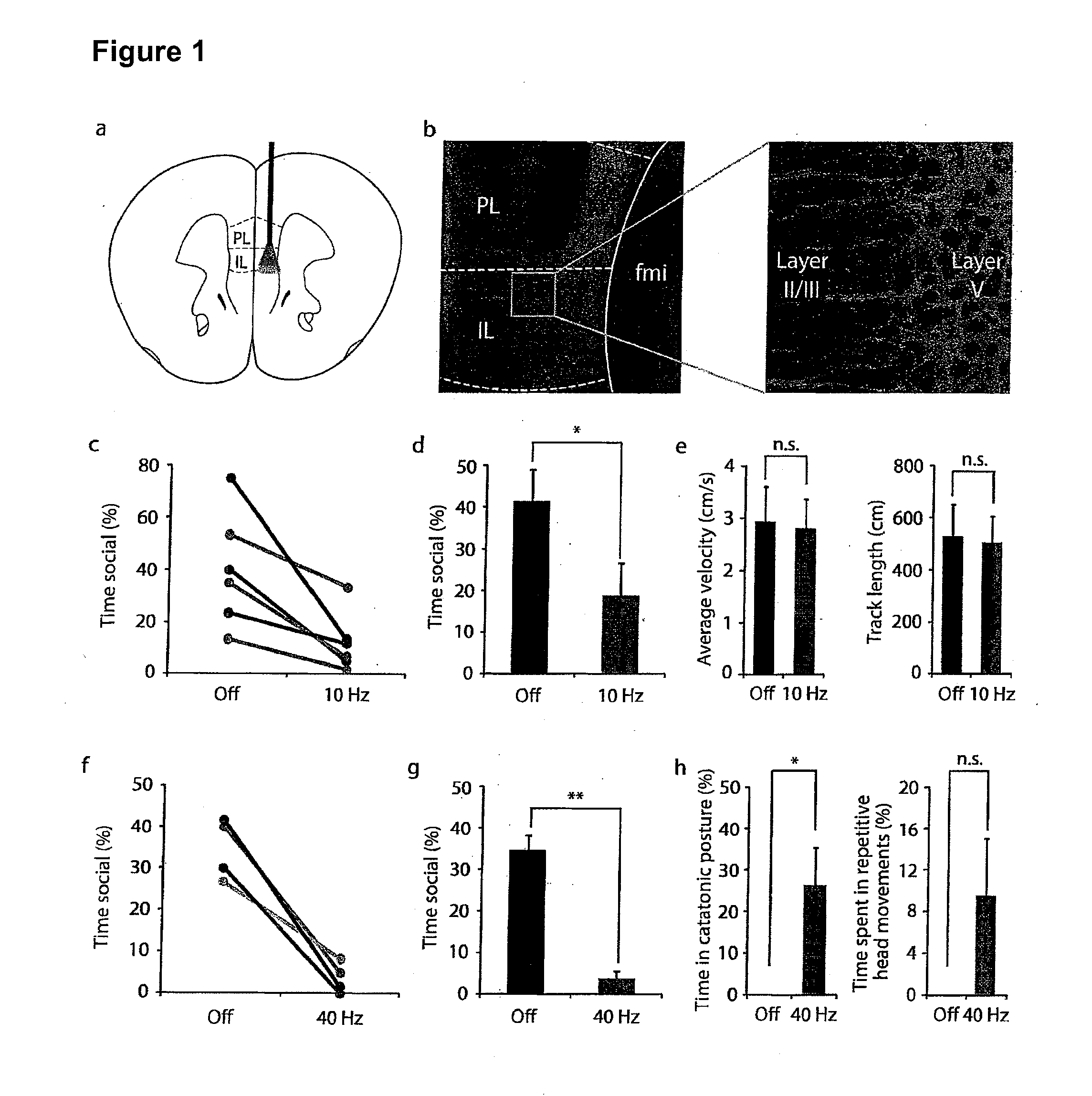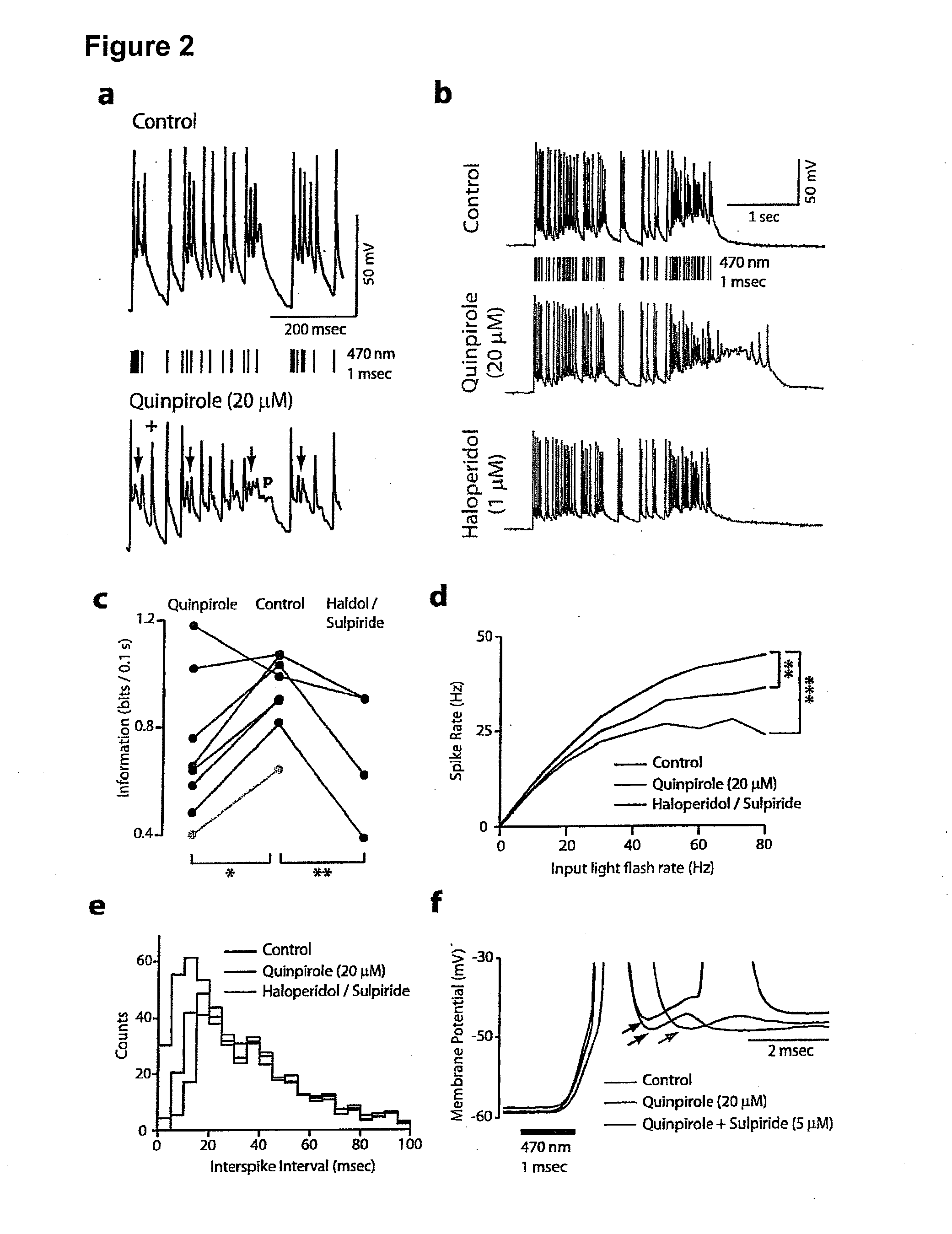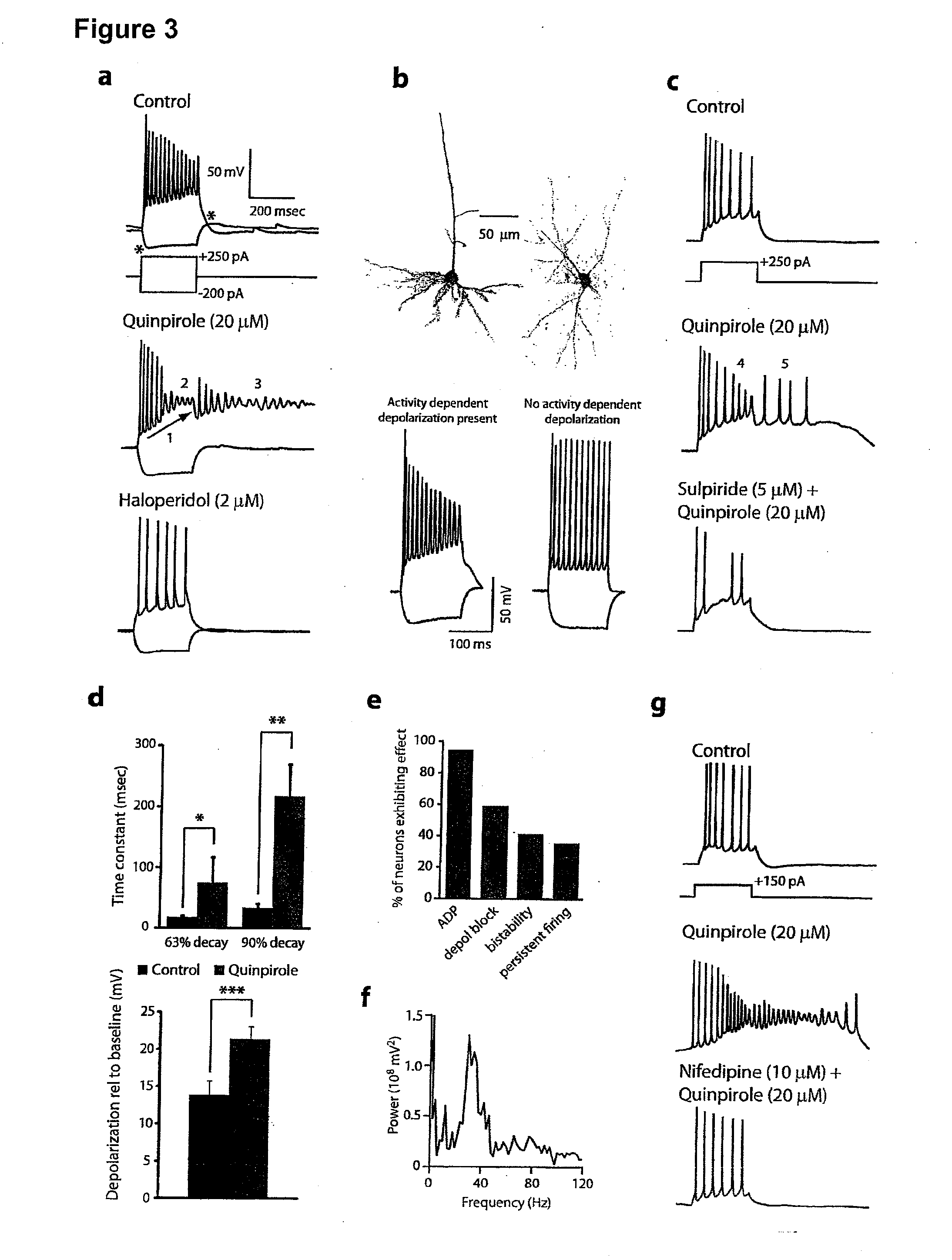Control and Characterization of Psychotic States
- Summary
- Abstract
- Description
- Claims
- Application Information
AI Technical Summary
Benefits of technology
Problems solved by technology
Method used
Image
Examples
example 1
Psychotic-Like Behaviors Induced in Mice by Optical Stimulation Of Infralimbic Layer V Pyramidal Neurons Expressing ChR2
[0108]We chose to conduct our search in layer V pyramidal neurons within the PFC, for two reasons. First, D2 receptors in the PFC are concentrated on layer V pyramidal neurons (3, 4), and D2 receptors play a critical role in schizophrenia and other forms of psychosis (5) as all known antipsychotics block the D2 receptor, whereas drugs that increase dopamine levels (e.g. L-Dopa, stimulants), and dopamine receptor agonists can cause psychosis in normal individuals, or exacerbate symptoms in patients with schizophrenia. Indeed, binding to cortical D2 receptors may specifically explain the superior efficacy of certain antipsychotics, particularly for cognitive and negative symptoms of schizophrenia (6). Second, layer V pyramidal neurons are the key output neurons of the neocortex, responsible for signals including corollary discharge, which, when deficient, could contr...
example 2
A D2 Agonist Elicits an Activity-Dependent Depolarization Mediated by L-Type Ca2+ Channels in a Subset of Layer V Pyramidal Neurons that is Reversible by D2 Antagonist Treatment
[0114]Optical stimulation of ChR2-expressing layer pyramidal neurons induces schizophrenic-like behavior in Thy1: ChR2-EYFP transgenic mice. We therefore proceeded to explore processes by which pharmacologic manipulations relevant to schizophrenia could affect these layer V pyramidal neurons in the PFC. As discussed above, D2 receptors play a key role in schizophrenia, and the D2 agonist quinpirole elicits schizophrenia-like behaviors in animals (10, 11). To explore processes by which pharmacologic manipulations relevant to schizophrenia could affect these layer V pyramidal neurons in the PFC, prefrontal slices from Thy1::ChR2 mice were used to study network activity evoked by light in the presence or absence of quinpirole followed by treatment with known D2 antagonists (FIGS. 2 and 3).
[0115]Materials and Met...
example 3
Phencyclidine (PCP) Also Elicits an Activity-Dependent Depolarization Via L-Type Ca2+ Channels that is Reversible by Treatment
[0125]Having studied the effects of quinpirole on neurons that mediate prefrontal output, and identified a mechanism that disrupts their ability to transmit information, we next compared the effects of quinpirole to those of another psychotomimetic, phencyclidine (PCP). PCP produces a syndrome closely resembling schizophrenia in humans (14), and has long been used to model schizophrenia in animals.
[0126]Materials and Methods
[0127]Brain slices isolated from Thy1::ChR2 transgenic mice underwent direct current stimulation and a layer V pyramidal neuron was monitored by electrophysiological recordings for cellular responses to depolarizing current pulses in the absence or presence of 5 μM PCP. The brain slice was subsequently treated with either 5 μM sulpiride or 10 μM nifedipine and electrophysiological recording monitored the cellular response to treatment. To ...
PUM
 Login to View More
Login to View More Abstract
Description
Claims
Application Information
 Login to View More
Login to View More - R&D
- Intellectual Property
- Life Sciences
- Materials
- Tech Scout
- Unparalleled Data Quality
- Higher Quality Content
- 60% Fewer Hallucinations
Browse by: Latest US Patents, China's latest patents, Technical Efficacy Thesaurus, Application Domain, Technology Topic, Popular Technical Reports.
© 2025 PatSnap. All rights reserved.Legal|Privacy policy|Modern Slavery Act Transparency Statement|Sitemap|About US| Contact US: help@patsnap.com



